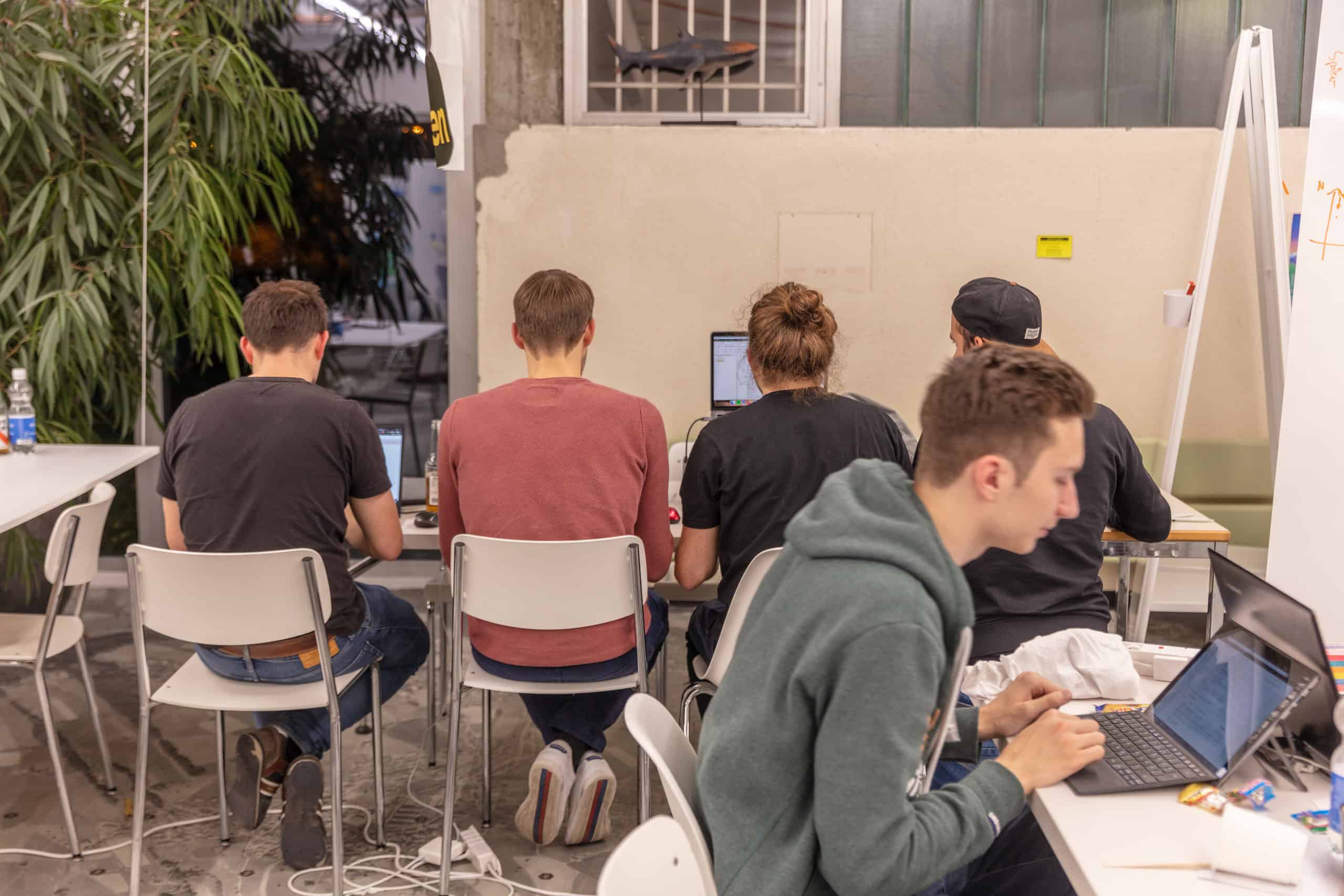Introduction
In our first blog on inclusive language in the workplace, we explored the ABCs of LBGTQ+. Now we’re plunging into the world of pronouns. In this blog, we cover the role pronouns play in inclusive language, provide tips on how to navigate conversations, and share simple ways to replace gendered language in the workplace.
Learning to use our coworkers’ pronouns correctly and challenging our ingrained assumptions can feel intimidating but it’s an essential step to making our workplaces more inclusive.
We hope these tips will give you a starting point to open a conversation, a spark of curiosity to dig deeper and more courage to live #diversity365.
Inclusion starts with us!
Pronouns and Inclusive Language
You may have seen people list their pronouns next to their names on LinkedIn or other social media. You might have wondered what it’s all about and why it’s important.

Linguistically, pronouns are words that allow us to refer to someone without using their name (i.e., they/them/theirs, she/her/hers, he/him/his). Pronouns are a useful tool and a natural part of our language.
Our personal pronouns are a way to express our gender and are an integral part of who we are. For many, using the binary pronouns he/she to refer to others is a deeply rooted habit. However, many people use gender-neutral pronouns or no pronouns at all.
Referring to someone as he or she based on their name or appearance means making assumptions about someone’s sexuality and identity. Misgendering someone by referring to them with the wrong pronouns can hurt, alienate, and even make someone feel endangered.
Outward indicators like clothing or a person’s name are not enough to know what pronouns someone uses. That is why many people have taken the initiative to share their pronouns publicly (like in their LinkedIn profile).
We found LGBTQIA Resource Center’s reference guide helpful in understanding different pronouns.
Tips to Get Started
Don't Assume When It Comes to Pronouns
We shouldn’t guess someone’s pronouns. Making a wrong assumption about someone’s gender can lead to an uncomfortable situation for both parties. So before you know someone’s pronouns, it’s best to use the gender-neutral pronouns they/them/their. The truth is that unless someone shares their pronouns, you can’t know for sure.
Share Your Own Pronouns First
You can help create a culture where sharing pronouns is normal by sharing your own. Some people feel comfortable being asked about their pronouns, but sharing your own first is always better. Introducing yourself with your pronouns invites the other person to do the same without being forceful.
Publicly sharing your pronouns also raises awareness and can help normalize conversations about gender in the workplace.
With someone new, this can look like this: “Hi, Ives! Welcome to the team! I’m Catherine, and I use she/her pronouns.“
Asking about pronouns
If it’s someone you already know and you’re unsure about their pronouns, you can use their name. But if it’s a safe environment, you can ask what pronouns someone uses (after sharing your own). This should happen in a small group or one-on-one. Remember, people have the right not to identify their pronouns.
Asking someone about their pronouns can look like this:
- Hi Christina, I wanted to share that I use the pronouns they/them. What pronouns do you use?
- I’d really like to use your correct pronouns. Would you feel comfortable sharing them with me?
Although frequently used, we should avoid saying prefer when asking about pronouns because this implies that someone’s gender is just a preference.
Other Tips to Help Create a Safe Culture to Share Pronouns
If you’re at an event, write your pronouns on your name tag
Include your pronouns in your email signature
Add pronouns to your public work profiles
If you’re facilitating a meeting, introduce yourself with pronouns and invite others to do the same if they feel comfortable
What to Do if You Mix up Someone's Pronouns
What do you do if you accidentally refer to someone with the incorrect pronoun? Mistakes can happen. If you slip up:
Apologize and use the correct pronoun. This can look like, “I’m sorry, I meant her.” But try not to over apologize.
If you’re in a meeting or a group, correct yourself and then consider apologizing for one-on-one instead of in the group setting. It’s helpful not to put someone in an uncomfortable spotlight.
Move on and keep practicing, correcting, and apologizing when you make a mistake.
Say Sayonara to Gendered Language
Practical Ways to Replace Gendered Language
We’re surrounded by gendered language and binary pronouns— from the forms we fill out to the apps we use to the books we read. But, there are many easy ways to replace gendered language with neutral alternatives. Many of these terms are becoming more common, but we’ve included them here for reference.
Gender-Neutral Terms for Family Members
Neutral Term
Gendered Term
Partner
Husband/Wife/
Boyfriend/Girlfriend
Spouse
Husband/Wife
Child
Daughter/Son
Sibling
Sister/Brother
Parent/Caregiver/Guardian
Mother/Father
Parental Leave
Maternity/Paternity Leave
Non-Gendered Terms for Addressing Groups
Neutral Term
Gendered Term
Hey Team(mates)/Everyone/Folks/All/You All/Y’all/Friends/People/Colleagues/Audience Members
Hey Guys/Dude/Bro/Man
Good Morning Everyone!/People!/Folks!
Good Morning Ladies & Gentlemen!
Humankind’s accomplishments…
Mankind’s accomplishments
Workforce
Manpower
Non-Gendered Terms for Professional Titles
Neutral Term
Gendered Term
Actor
Actress
Legislator
Congressman
Server
Waitress
Police Officer
Policeman
Firefighter
Fireman
Salesperson/Sales associate
Salesman
Flight attendant
Stewardess
Postal worker/Mail carrier
Mailman
Chairperson/Moderator
Chairman
Resource: Talaera
Conclusion
Using pronouns correctly is an integral part of fostering an inclusive environment. Pronouns can help people feel included, seen, and respected. But, equally, using the wrong pronouns can cause people to feel unsafe or isolated.
Let’s take the initiative to stand for #diversity365 by sharing our pronouns and asking our coworkers, “what pronouns do you use?”
We hope you’ll join us on this journey of making the world a more inclusive place for all, especially in the workplace. We’ll be back soon with our final installment, where we’ll wrap up everything we’ve learned into a user-friendly guide.












